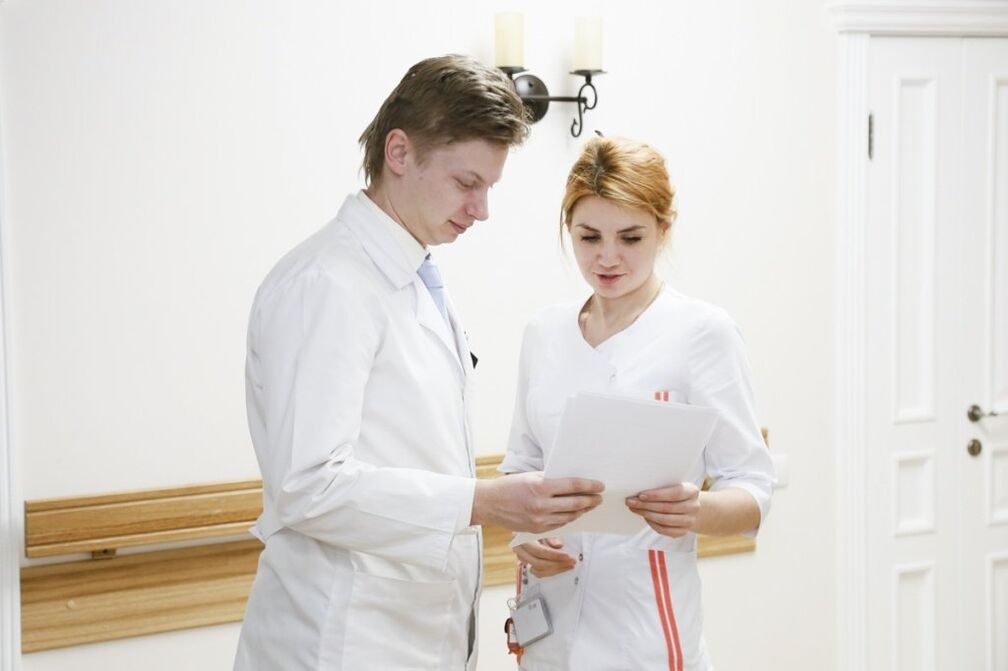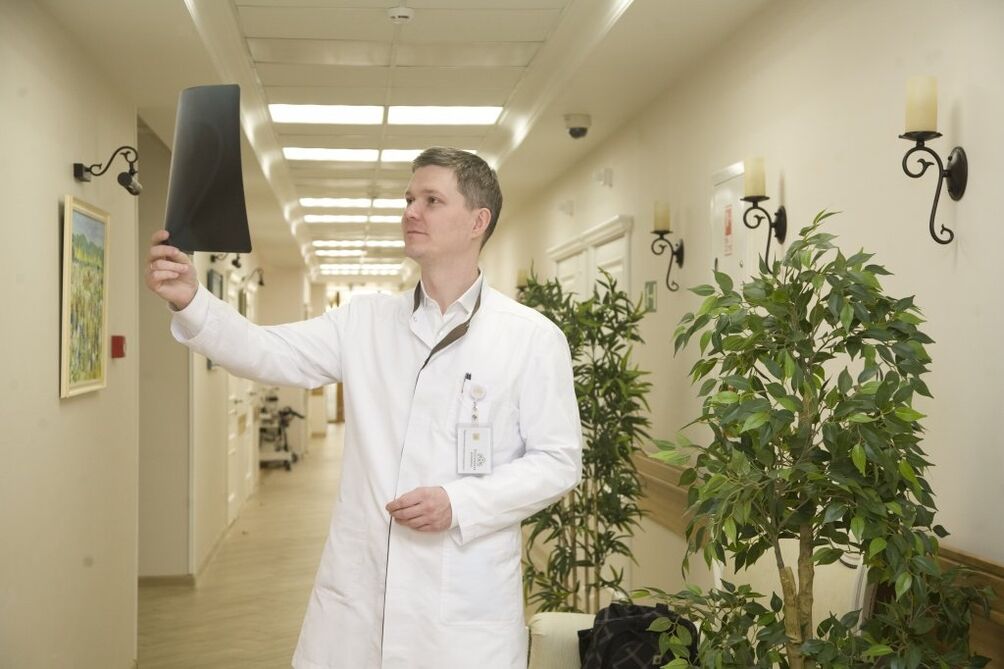Up to 76% of the population suffers from back pain during the year;In 7% of cases, patients complain of acute back pain.The hospital's rheumatologists determine the cause of back pain using the most modern instrumental and laboratory research methods.To relieve pain and further treatment of patients, doctors prescribe modern drugs with high effectiveness and minimal side effects.Rehabilitation specialists use innovative methods of restorative therapy to accelerate the recovery process of patients with back pain.
What types of back pain are there?There are 4 types of back pain: local (local), projection, radicular (radicular) pain and pain that occurs due to muscle spasms.The most common forms of back pain are combined.Lumbosciatica is characterized by three forms of pain: muscular-tonic pain in the form of syndromes of the piriformis, gastrocnemius and gluteal muscles, neurovascular pain and neurodystrophic pain.
There are primary and secondary back pain.Primary pain syndrome most often develops between the ages of 20 and 50.It is based on the following mechanical factors:
- spondylosis and intervertebral osteochondrosis;
- Dysfunction of the musculoskeletal system of the back;
- Herniated disc.
Psychogenic back pain in its pure form is rare.Diagnosis is difficult because the patient suffering from a mental disorder often suffers from comorbid musculoskeletal disorders and other neurological diseases that can cause pain.Secondary pain syndrome predominates in patients under twenty and over fifty years of age.
Doctors refer to pain that lasts less than six weeks as acute, pain that lasts six to twelve weeks as subacute, and pain that lasts longer than twelve weeks as chronic.Muscle pain in the back occurs with myositis, osteochondrosis and after injuries.Patients with acute, subacute, and chronic back pain have different prognoses for recovery and return to work.Rheumatologists use different approaches to diagnose and treat the cause of various types of pain.

Causes of back pain
One of the most common causes of back pain is traumatic spinal injuries resulting from excessive strain during stereotypical physical activities and sports.Such injuries have the following consequences:
- vertebral fracture;
- deformation or rupture of the intervertebral discs;
- Inflammation and stretching of the joint capsule;
- Rupture of the ligaments of the spine.
Microtrauma can occur as a result of unsuccessful sudden movement during constant physical activity.
The following causes of back pain are also identified:
- curvature of the spine;
- Neuralgia;
- osteochondrosis;
- compression of nerve endings;
- arthritis and inflammatory diseases;
- Oncological spinal tumors;
- damage to the fascia;
- muscle cramp.
The causes of chronic back pain can be diseases of the internal organs (heart, lungs, kidneys), burns, cancer, lack of exercise and emotional overload.Severe back pain can be caused by uncontrolled use of certain medications.If back pain radiates down the leg, you should consider sciatic risculitis.Back pain in the lumbar region is characteristic of diseases of the intestines, kidneys, prostate in men and diseases of the reproductive system in women.Spinal pain in the middle of the back can be a manifestation of a heart attack.Pain under the ribs from behind occurs with intercostal neuralgia.
The term “non-specific back pain” has recently been frequently used in clinical guidelines that deal with the problem of back pain.It refers to pain associated with musculoskeletal disorders without evidence of damage to the cervical, thoracic, lumbar and sacral roots or specific spinal injuries.
Determining the cause of back pain
The hospital has unique diagnostic capabilities that allow you to quickly determine the cause of back pain.Doctors establish a connection between the clinical manifestations of the disease and data from further research methods.The examination program for a patient with back pain includes the following diagnostic measures:
- X-ray examination of the spine;
- computed tomography;
- Magnetic resonance imaging.
X-ray examination has important diagnostic value for back pain.Standard diagnostic methods include radiographs in anteroposterior and lateral projections, as well as functional spondylograms in the position of maximum flexion and extension.Computed tomography and magnetic resonance imaging make it possible to clarify the localization of the pathological process.
Patients with back pain are prescribed the following types of instrumental studies:
- electrocardiography (for cardiac dysfunction);
- magnetic resonance imaging or computed tomography with contrast agent;
- Optical topography of the skeleton and stabilization diagnostics;
- Ultrasound examination of joints and spine;
- Densitometry (determination of bone density);
- electroneuromyography;
- Spiroarteriocardiorhythmography.
Patients undergo a complete blood count, urinalysis, and tests for C-reactive protein and rheumatoid factor.The differential diagnosis of acute back pain is between the following diseases:
- Potentially dangerous diseases of vertebral and non-vertebral origin (compression of the cauda equina, traumatic, tumoral, inflammatory and infectious lesions of the spine, osteoporosis and diseases of internal organs);
- compression radiculopathy;
- Benign back pain in the musculoskeletal system.
Only after determining the exact cause of back pain do doctors create a treatment plan for the patient.
Treatment of back pain
Pain syndrome is based on two main mechanisms that determine the treatment of a patient with back pain: damage to the spine and spasms or sprains of muscles and ligaments.From the first day of treatment, patients are prescribed nonsteroidal anti-inflammatory drugs (NSAIDs).Its anti-inflammatory effect is based on the inhibition of cyclooxygenase-2.NSAIDs not only inhibit the metabolism of this inflammatory mediator, but also actively influence the production of prostaglandins, which are associated with the mobilization of calcium in smooth muscles.For muscle pain in the back, patients are prescribed muscle relaxants.
If analgesics and non-steroidal anti-inflammatory drugs do not have an effect or there are contraindications to their use, weak opioids (codeine, tramadol) are used to relieve severe back pain.Strong opioids are used in the form of transdermal therapeutic systems with gradual, long-term release of the active ingredient.
Antidepressants are prescribed to treat chronic back pain.They reduce pain intensity in patients with chronic back pain.The analgesic effect of antidepressants does not depend on the presence or absence of concomitant depression.Pepper plaster applications can be used for short-term pain relief.
Patients with back pain are advised to avoid bed rest and continue their normal daily activities or resume them as soon as possible.If there is acute pain in the lumbar region, active physical activity is ineffective in the first two weeks of illness.
One of the most effective modern treatments for chronic back pain is “pain therapy.”The method involves a targeted effect on the affected areas: painkillers are injected into precisely defined areas using X-rays.Blocking pain impulses in combination with a series of individual treatment procedures can relieve the patient of back pain in the long term.
Doctors in the hospital combine drug therapy for back pain with the following types of treatment:
- physiotherapy;
- Massage;
- Acupuncture;
- Kinesiotherapy.
In the case of acute back pain, the doctor may recommend that the patient wear muscle corsets.Their effectiveness in chronic pain syndrome has not been proven.Individually selected physiotherapeutic exercises start the process of tissue restoration and fully restore the motor functions of the spine.Therapeutic massage and myostimulation with the most modern devices with which the rehabilitation clinic is equipped can quickly relieve the patient of back pain.These methods are necessary for the patient's complete recovery.
One of the most popular non-drug methods for relieving local back pain is transcutaneous electrical nerve stimulation.This involves blocking pain using electrical impulses at the localization site.Another effective pain relief method used in the hospital is the biofeedback method.It emerged at the intersection of psychology and physiology.A special device reads information from the patient's body.A computer model of it is then created on the screen.It clearly shows all the processes taking place in the body, including pain.If the patient does not return to normal daily activity four weeks after the onset of acute back pain, a referral for chiropractic therapy is required.
Which doctor treats back pain?The hospital takes a multidisciplinary approach to treating patients with chronic back pain.These are programs for drug treatment, patient education, therapeutic exercises and psychotherapeutic interventions, which are regularly carried out with the participation of several specialists (neurologist, vertebrologist, rheumatologist, psychotherapist, rehabilitation specialist, therapist).
Cognitive behavioral psychotherapy reduces the intensity of back pain and improves functional status.Programs that combine behavioral psychotherapy with a gradual increase in physical activity allow the patient to quickly return to normal work.

Physical rehabilitation for back pain
Therapeutic exercises play a major role in the physical rehabilitation of patients with back pain.With the help of individually selected exercises, motor and neurological disorders are corrected, trophism and tissue recovery are improved.Rehabilitation specialists at the hospital use ideomotor and passive exercises for back pain.
Passive exercises are performed with the greatest possible range of motion in the joint, in one direction, strictly in the same plane, at the same speed.The rehabilitator initially performs it on large joints and then gradually moves on to small joints.Ideomotor exercises are used to restore damaged pathways of transmission of nerve impulses from the center to the periphery.They are often used for persistent pain syndrome.
For patients with muscle weakness, rehabilitation therapists prescribe active isometric muscle exercises.Patients perform them without straining and holding their breath while maintaining tension.These exercises improve blood flow to cramped muscles, prevent muscle atrophy and restore the transmission of nerve impulses.To increase muscle strength, active dynamic exercises from easy starting positions are used.When performing the exercise, the attachment points of the antagonistic muscles are brought closer together and the attachment points of the trained muscle are separated as much as possible.
In some cases, surgery is used to treat back pain.To avoid surgery, if you have back pain, call the Contact Center and make an appointment with a neurologist or rheumatologist.After a complete examination and determining the cause of back pain, the doctor will prescribe comprehensive treatment.After relieving acute pain in the spine, patients undergo rehabilitation therapy in a rehabilitation clinic using the most modern equipment and innovative techniques.
























